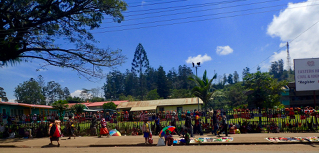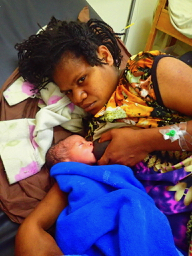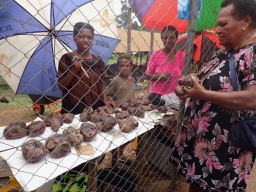1. Building and strengthening the maternal and child health care workforce in PNG due to dangerously low numbers. With 0.8% midwives per 10,000 in a population of nearly 9 million people and a fertility rate of 3.5 per woman, an infant mortality rate of 35.9 per 1000 (Australia 2.8 per 1000) and a maternal mortality rate of 215 per 100,000 (Australia 5 per 100,000) workforce shortage is a major contributing factor of poor maternal and infant health outcomes in PNG.
Progress: The committee has been researching the avenues available to PNG nurses to upskill and complete a Grad diploma in midwifery in PNG. 4 universities offer the course which is not affordable on local nurses’ salaries. THF is working towards raising funds to create scholarships to support training for local nurses to become midwives. World Health Organisation (WHO) and the International confederation of midwives (ICM) support the notion that midwives save lives, hence the foundation is committed to the end goal of all women and families having access to a skilled birth attendant during pregnancy labour, birth and beyond
2. Health worker kits. As we have done for the past 4 years with Kavieng in New Ireland province and Tari in Hela province we will continue to equip current health workers on the ground with essential tools of the trade.
Progress: Eastern Highlands Provincial Health Authority (EHPHA) has been running an up-skilling program for Community Health Workers (CHW). Goroka Hospital is the base for this 6-month in-service program to upskill CHW in Advanced Maternity Care Skills. A total of 30 CHWs have graduated representing aid posts and rural and district hospital levels from eight districts of the EH province. 30 complete health worker kits are ready to send via air freight. Quotes are in as we await funding for freight to send these on their way to the deserving recipients who provide care. Supporting the upskilling program is an interim and sustainable way THF can strengthen rural health in PNG while more opportunities for midwifery training eventuates.
3. We are committed to getting essential medical supplies and mother and baby packs to remote areas of PNG where health workers and communities are isolated and poorly resourced. This year we chose another remote and sometimes forgotten area of Papua New Guinea, East Sepik region.
Progress: Our initial intention this year was to send a 40ft container with the mindset that given all the work involved in getting a 20ft container there, we might as well send as much as possible to benefit as many as possible. However, after consideration of logistics and poor road and access to health sites in the East Sepik region, we have reverted to the 20ft container due to logistics and size and difficult road conditions in the Sepik region. Our local Champions and leadership on the ground in East Sepik-Yangoru Saussia area are Linda Tano (Midwife) and Glenis Wopmi (Health Extension Officer0DHM). Below is a map of where and how the container and contents will travel.



































